I define Modernism as more than an art form, which was merely the outward manifestation of the changes that were taking place in civilization. A number of events, both physical and astrological, defined the birth of the XXth Century, and the changes start before the official date.
In this entry I will start the beginning of the “Twentieth Century” at 1886. This was before the first major aspect, the twice a millennium conjunction of Neptune and Pluto.
The memorable event of 1886, which is stills as relevant today, if not more so, was the Supreme Court ruling know as Santa Clara County v. Southern Pacific Railroad. The upshot of this decision, even though it wasn’t in the actual decision, is that corporations are people as far as the Fourteenth Amendment goes. In fact, the Fourteenth Amendment was applied more often to corporation than to the freed blacks that it was intended for.
The 1890s saw the rise of Corporate Capitalism, the third period of that financial system. (I am indebted to the historian William Appleman Williams and his book Contours of American History for the terms for the first three stages of capitalism. Since the book was published in 1968 he missed the next two stages which will be described at a later time.) This was an entirely different beast from laissez nous faire (William’s term) capitalism – leave us alone. Laissez faire is the mythic system of capitalism that grew up in the 1820s (we’ll look at the astrological signifiers at a later date) after Adam Smith published The Wealth of Nations in 1776. Often when people refer to the glories of capitalism they are thinking of this type of capitalism that has long since gone.
Corporations became increasingly powerful in the 1890s, for example (in the United States) U. S. Steel (Andrew Carnegie) and Standard Oil (John D. Rockefeller). The “Trusts” that Progressive politician like Theodore Roosevelt wanted to bust grew up on this period. The Uranus-Neptune conjunction took place near the Descendant of the United States, which is why the United States was so strongly affected by this Corporate Capitalism.
Another important event of this period was that the United States got an empire, not just in the Caribbean (Cuba, Puerto Rico) but in Asia (Philippines, Guam). This started with the Spanish-American War of 1898, America’s first major venture into the outside world, after the North American continent had been conquered and the native population successfully put down. The Open Door Policy (Secretary of State John Hay) gave notice to the rest of the world that America was a world power, and it would soon surpass Great Britain as the dominant power in the world.
In this period the world was changing rapidly through electric lighting (Thomas Edison 1879), the telephone (Alexander Graham Bell 1876), and the box camera (George Eastman 1900).
In this period there were not only crossings of the cardinal axis by all three outer planets, but there were two important oppositions that describe so much of what was going on in the world at the dawn of the Twentieth Century. The Uranus opposite Pluto was strongest in the first half of the first decade of the new century, and the Neptune opposite Pluto was strongest during the second half of the decade, extending through a few years of the second decade. This period was filled with all kinds of changes, which I will briefly outline below. A good description of this period is found in many books, such as The Vertigo Years by Philip Blom.
A brief list of the important event in this period:
The first Russian Revolution took place in 1905; it wasn’t successful and made the Russians even angrier. Then, after the disastrous World War I, they fought the second Russian Revolution of 1917, which was successful.
The Emperor of China, Puyi, who was the twelfth ruler of the Qing Dynasty, served as a child for a few years. A film was made about his life in 1987. Born in 1906, he ruled from 1908 to 1912. He was not only the last emperor of his dynasty, but in fact the last emperor of China. The Twentieth Century was encroaching on China.
The NAACP – then called the Niagara Movement, so called because they were not allowed to eat in a hotel in the United States so they had to meet on the Canadian side of Niagara Falls – was formed in the United States in 1905.
The International Workers of the World, commonly known as the Wobblies, were formed in 1905 with the intent to be One Big Union. They wanted all workers to join together to form a union, and were and the forefront of radical labor action, for which they paid a high price.
An Indian lawyer in South Africa by the name of Mohandas Gandhi, promulgated his doctrine of non-violent protest, called Satyagraha, on September 11, 1906. This is often referred to as “the first 9/11” but has a much different meaning in history that what the phrase “9/11” usually refers to. He later moved back to India where that doctrine changed the government. His doctrine was also adopted by Dr. Martin Luther King in the United States, with far-reaching repercussions.
There were anarchist and syndicalist movements forming all around the world, such as in Korea, China, Japan, Mexico, Puerto Rico, Cuba, Peru, Brazil, Argentina, Egypt, and South Africa. Details of this international anarchism are found in the book Anarchism and Syndicalism in the Colonial and Postcolonial World 1870-1940 edited by Steven Hirsch and Lucien van der Walt.
In America in 1904 there was one of the biggest ecological disaster that had ever happened in that country. In that year started a chestnut bight that destroyed an estimated 3.5 billion chestnut trees in the country. The cause was a fungus imported from Asia. By the time the Great Depression hit America in less than 30 years the people of especially Appalachia were hit by this lack of food and lumber.
In the realm of science, two major theories were developed in this period which revolutionize science and our concept of the Universe, which up until that time had been based on theories of Issac Newton in the Eighteenth Century. In the very small quantum mechanics was developed by Max Planck, Niels Bohr, Werner Heisenberg, Albert Einstein, and others. In the very large the Special and General Theories of Relativity were developed by Albert Einstein with help by Max Planck and others. Both these theories had profound implications and brought science beyond Newtonian physics. And in 1912 the meteorologist Alfred Wegener developed theory of continental drift, which was immediately rejected only to be accepted a quarter of a century later. The theory was first suggested in the late 16th Century under a Uranus-Pluto conjunction. Also in the first decade of the Twentieth century scientists like Henri Becquerel, Ernest Rutherford, and Marie Curie made discoveries that laid the foundation for the atomic bomb.
But there were also big changes in our concept of the interior world, lead by Sigmund Freud and Carl Jung, who first communicated in 1906. There were many others developing the new fields to explore the mind, such as psychoanalysis and psychotherapy. The concept of the subconscious and the interest in analyzing dreams were just two of the ways their ideas changed the world.
The art world also saw a big burst of change. The Spanish artist Pablo Picasso and the French artist Georges Braque were starting their careers which would lead to the school of Cubism. Picasso’s painting Les Demoiselles d’Avignon from 1907 shocked and scandalized the art world. Also at this time an artist who is considered one of the best of the Twentieth Century, along with Picasso, was at work. This was Henri Matisse. Marcel Duchamp, who later would be famous in the world of Dada, created the painting was Nude Descending a Staircase, No. 2, which was shown in 1912. I did not see this clearly until I saw a stroboscopic picture by Gjon Mill of a figure descending. Duchamp had captured the idea of strobelights long before they were actually used.
In Italy the movement know as Futurism was developed. There was recently a show of art from this school at the Guggenheim in New York. The artists of this school were enchanted by the speed of cars and planes, of the new world forming at the beginning of the century.
In Russia what has been called the Russian avant-garde was developing. The best known artists of this school were Wassily Kandinsky and Kazimir Malevich but there were many others. They took abstraction far beyond the ideas of Picasso and Duchamp.
Among writers there was James Joyce, who often considered the outstanding author of the Twentieth Century, and Virgina Woolf and the Bloomsbury Group. Upton Sinclair and Jack London were publishing novels that shook up the view of the world. And don’t forget L. Frank Baum and his Wonder Wizard of Oz, rumored to be a political parody, which is still influential. Theodor Herzl published his idea of Zionism, whose influence is felt strongly 100 years later.
The development of computers took a step forward with the work of Herman Hollerith. He developed the 80-column punch card that could be used to tabulate data automatically. This device was used to automate the 1890 census, speeding up the time it took to finish the count by a factor of eight. He founded a company which was later merged to form IBM. The use of 80 columns was popular in the computer field through the Eighties.
Cars were becoming increasingly popular in the first decade of the Twentieth Century. This popularity was greatly helped by the introduction of the first affordable automobile, the Model T Ford in 1908. This automobile was released by the Ford Motor Company of Detroit Michigan and not only allowed the middle class to afford an automobile, but provided employment to many, including recent immigrants to the United States and Blacks fleeing the Jim Crow South. The implication of the automobile were profound but they weren’t realized for many years. All of the gas burned polluted the atmosphere causing the greenhouse effect, and people stopped moving, leading to many diseases of inactivity. As a result of the widespread use of the automobile large stretches of open land has been paved over, for highways, parking lots, and driveways—personal parking lots for each home. In fact , some homeowners associations require all houses to have driveways, whether of not they are used. If an alien viewed Earth, the alien might believe that automobiles are the dominant life-form on the planet. These automobiles are attended by small symbiotes who feed them and keep their outsides clean, and buy them fuzzy dice and dashboard mascots, in exchange for which the small symbiotes are taken places by the automobiles.
Motion pictures were developed during this period. Names like Edison in 1891 and Lumiere in 1895 developed a way of projecting a picture onto a screen – if this was done often enough the human brain would not see individual frames but rather continuous motion. But by the early years of the Twentieth Century motion pictures became wildly popular as the art of cinema developed and people no longer had to be content with images of simple motion. By the middle of the first decade of the XXth Century feature films – films longer than one reel – were being produced. At the same time actors began to get credit and production companies were organized.
But it was not only motion pictures that became increasingly popular, but still pictures that could be taken by an individual. Today when many people carry camera with them on their cell-phones, we forget what a breakthrough this was since before this time photography was a difficult process not suitable for someone not truly interest in the act. This change was due to George Eastman and his introduction of the Brownie camera in 1900 with the motto “You push the button, we do the rest”.
The development of the airplane, most famously by the Wright Brothers, in the first decade of the new century, revolutionize life. Another person famous in the history of powered flight, who may also have a claim to the first flight, is Glenn Hammond Curtiss, who made the first officially witnessed powered flight and founded the aircraft industry. The names of both these pioneers lives in the name of the current aerospace company Curtiss-Wright Corporation. The dream of flying like a bird had been a long one for mankind, as the myth of Icarus suggests. It was given a boost with the development of hot-air balloons by the Montgolfier brothers in 1783, allowing humans to float over Paris. But by the Twentieth Century powered flight came into being, and there were many developments after that in the field. This allowed humans to move easily from place to place in the world, and also, as an unforeseen consequence, to transfer all types of animals and microbes from one part of the world, where immunity existed, to other parts of the world were that particular disease had never been seen. We are living with the consequences.
Music also changed in this period. Igor Stravinsky changed music with his Rite of Spring, first performed in 1913. The production was shocking, and the use of chords changed the way future composers looked at music. There was also a Futurist movement in music with many of the same origins as in painting. Charles Ives was one of the first American composers to be known throughout the world. The French composer Edgard Varese was relatively unknown at the time, but he has influenced many such as the rock artist Frank Zappa. Sergei Prokofiev was another composer who broke away from the Nineteenth Century
Much was happening astrologically at this time – it was very crowded. The first significant aspect was the once every 492 year conjunction of the two most outer planets Neptune and Pluto in the 1890s. This conjunction took place close to the Descendant of the United States which is why the United States was so strongly influenced by the changes that took place around the world.
During the first 15 years of the Twentieth Century all three outer planets crossed the Cardinal Axis. In 1901 and 1902 Neptune crossed the Cardinal Axis at 0 Cancer, then in 1904 and 1905 Uranus crossed the Cardinal Axis at 0 Capricorn. The whole thing, the changes of the first decade, were brought to an abrupt close when Pluto crossed the cardinal axis in 1913 and 1914. It was to be a far different world by 1920 that it had been at the end of the Nineteenth Century.
There were two important oppositions of the other planets in this period, in addition to the twice a millennium conjunction of Neptune and Pluto. The opposition of Uranus and Pluto was most intense from 1900 to 1903; this was the opposition preceding the conjunction of those two planets in the 1960s.
But the most important configuration of this period was Uranus at the Neptune/Pluto midpoint. Midpoints involving the three outer planets are quite rare, happening about three times a century, and they represent a zeitgeist change so that people living after the midpoint have trouble remembering what life was like before the midpoint, the changes they have gone through are so profound. In this case of the first midpoint we see that Modernism grew up, and people soon forgot what the slower world of the Nineteenth Century was like. The strongest part of the midpoint was 1903 through 1905, and at one point Uranus was also crossing the cardinal axis, adding more power to the midpoint. We can see from the graph that this midpoint was close from early 1902 to late 1906 and both were crossing the cardinal axis together in late 1904. The most common type of midpoint involving the three outer planets has Uranus as the apex planet, because Uranus is the fastest moving of the three. That was the case in this early Twentieth Century midpoint. The least common is with Neptune at the apex. There were two other outer planets midpoints in the Twentieth Century, which we will look at later. One may want to guess as to which turning points in the last Century corresponded to midpoint configurations.
In this final chart there is a grand overview of all the important configurations taking place in the period we are talking about. It is a graphical ephemeris for a twenty-year period starting in 1896 on the left. We can see that the Neptune-Pluto conjunction is separating from exact (black arrow). Then the Uranus-Pluto opposition takes place (red arrow) while at the same time Neptune crosses the Aries axis, shown by the horizontal black line. Next Uranus comes to the Neptune-Pluto midpoint (green arrow) and shortly thereafter both Uranus and the Neptune-Pluto midpoint cross the Aries axis, just before the center of the graph. Next there is the Uranus opposite Neptune (blue arrow) which lasts longer, five years exact, than the Uranus-Pluto opposition at two years. Finally, at the right, we see Pluto cross the Aries axis (yellow arrow) ending the period. World War I, the War to End All Wars, starts and the world of the Nineteenth Century is totally gone.
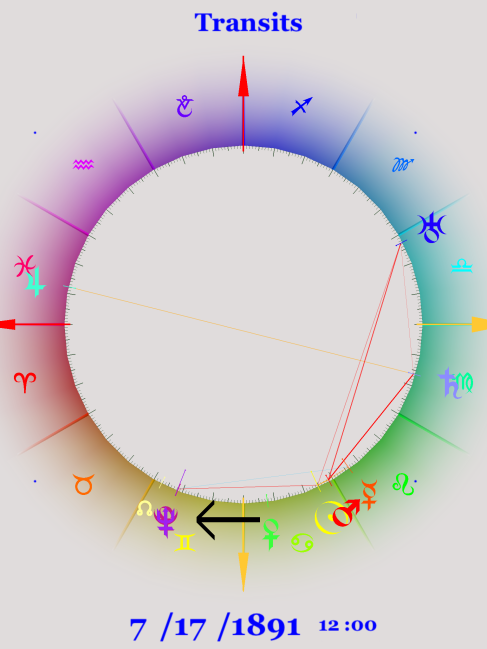
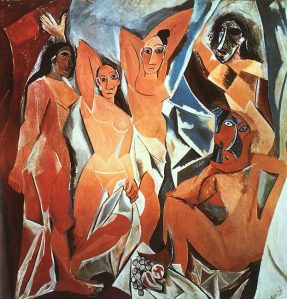
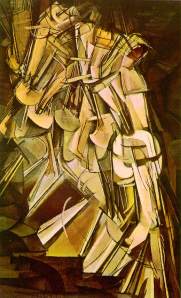

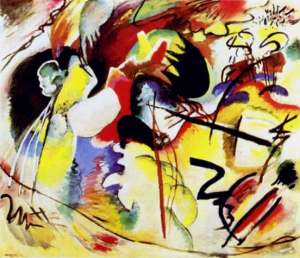
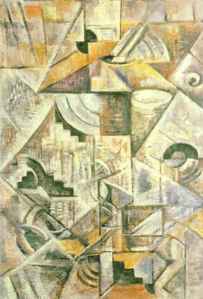



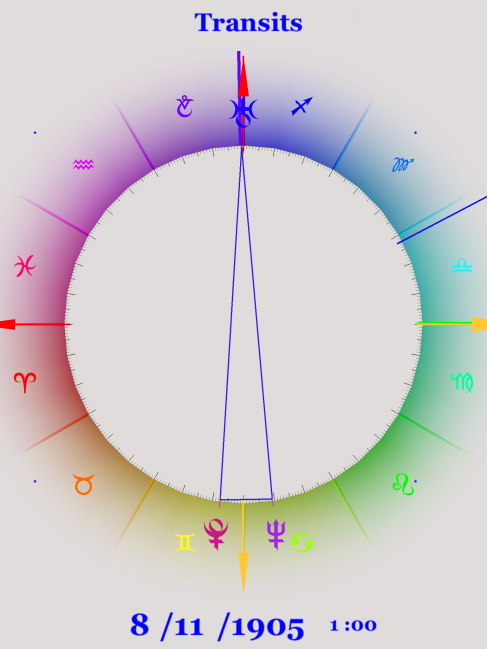

Another great article, Doug. So full of information and detail. I love the way you bring it all together.
I’m very happy whenever anyone mentions Glen H. Curtiss, someone too easily forgotten by history. So influential was Curtiss to aviation, that LaGuardia airport was initially to be named after him.
Keep up the writing!